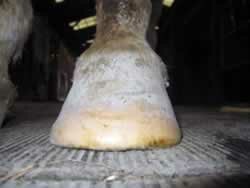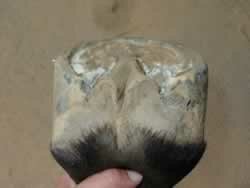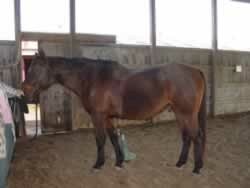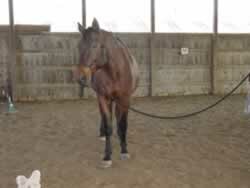Applicant Requirements
Thank you for your interest in The . We are an organization of professional trimmers that cherishes diversity. Our community of equine professionals enjoys the challenge of independent thinking. The rehabilitation and ultimate comfort of horses, the longevity of our philosophy of the natural horse, the spirit of unity within our organization; these are the things we are working hard to extend well into the future.
Applications are open to persons with at least two years of professional trimming experience.
For trimmers with less than two years professional experience or others desiring to enter directly into the Apprentice level, Click Here
International Students please click here to read application requirements.
Case Studies:
We require three complete case studies and two rehabilitation studies for a total of five. A case study is the photographic portfolio of your work taken over a period of three consecutive trim cycles, along with a written description of your evaluation and explanation of the work you are doing. If you only complete three full cases (minimum required), feel free to include random photos and/or incomplete case studies for cases four and five. These random photos can be of anything you'd like to share that would show the evaluators the quality of your work.
- We require three complete case studies and two rehabilitation studies for a total of five.
- Case studies four and/or five can be random photos of anything you'd like to share with us, to show off your trimming expertise. The extra photos can be of any feet, front or back. Please be advised that applicants looking to be fully certified with AHA need to include at least one case study of pathologic rehabilitation.
- A case study shall consist of at least threecomplete sets of photos taken over a minimum of three to six months' time; longer is also acceptable.
- Case study photos do NOT need to be of the first trim of a new client. They need to be a series of three trims.
- Within a case study, the photos must be of the same horse and the same hoof per case study, except in cases four and five if you are submitting random photos or an incomplete case studies.
- Please make sure that your pictures are clear, and that any ground level pictures are not negatively influenced by grass, gravel, bedding or irregular terrain.
- Please contact us if you are missing a photo in a series or some other pertinent information. We want you to succeed and will do our best to work with you.
Below we have listed our preference for correct photos. Because photos record just a moment in time, and can be influenced by any number of factors, we need to see the foot from various views to accurately assess the hoof and its shape. Dazzle us with your trimming skills and knowledge of whole horse health. Make sure you discuss all that goes into creating a healthy hoof, what you use to keep a horse moving soundly. We are a jury; present your documentation and video to show your abilities and prove why you should be a certified Member.
Hoof pictures to include: (examples of each view are supplied below):
- Front
- Lateral
- Heels
- Sole
- Heel to toe
- Oblique view of sole
- Radiographs if possible
To make this process easier, as you download your pictures for each of your case studies, you will choose from the following on a drop down menu:
First Trim
- 1 Front BT
- 1 Front AT
- 1 Lat BT
- 1 Lat AT
- 1 Heels BT
- 1 Heels AT
- 1 Sole BT
- 1 Sole AT
- 1 Heel/Toe BT
- 1 Heel/Toe AT
- 1 Oblique Sole BT
- 1 Oblique Sole AT
Second trim
- 2 Front
- 2 Lat
- 2 Heels
- 2 Sole
- 2 Heel/Toe
- 2 Oblique Sole
Third trim
- 3 Front BT
- 3 Front AT
- 3 Lat BT
- 3 Lat AT
- 3 Heels BT
- 3 Heels AT
- 3 Sole BT
- 3 Sole AT
- 3 Heel/Toe BT
- 3 Heel/Toe AT
- 3 Oblique Sole BT
- 3 Oblique Sole AT
Each Case Study should consist of three separate trims, a minimum of 30 hoof photos.
The intermediate, or second trim photos, can be either before or afteryou have trimmed the horse. Please include any radiographs that you would like to share.
Body Shots to include:
- Lateral view of the whole horse
- Front view of the horse
- Back view of the horse
This is the minimum material required to be considered as an applicant. We encourage applicants to submit additional material that they feel is important. Please include any explanations and observations you have made to help us in our evaluation.
Required Hoof Pictures:

Front

Lateral

Heels
Sole views

Sole

Heel to toe

Oblique view of sole

Radiograph
We are looking for a total of six different pictures per series.
Required Body Pictures:

Lateral

Front

Back
Video Requirements:
Through your video, we will assess your professional qualifications and knowledge. To best represent your work, you should showcase your trimming techniques, evaluation process, trimming and horse handling skills, knowledge of equine lower limb anatomy, and general knowledge of equine health and wellness concepts such as diet and nutrition, saddle fit, and environment and movement. Each one of these requirements is important to us. To ensure your application is considered in the best possible light, do not disregard any of them. Either maintenance or setup trims are acceptable. A short clip of booting or a brief discussion about booting or other hoof protection philosophies is encouraged but not required.
Your ability to communicate these topics orally forms an important basis of your professionalism and should be given the importance and time as befits. In other words, err on the side of over-inclusion. Tell us too much; to be sure that you don't say too little.
We are looking for people who can communicate the depth of their understanding to a wide variety of audiences, including vets, trainers, other equine professionals, and the horse owners for whom we work. Consider speaking directly to the camera as if it were a student or another professional. Give us a high quality explanation of the decisions you are making. If it helps your organization, someone behind the camera may ask questions to which you respond.
At a minimum, your video must include the following. Your video will be rejected if you fail to include any of these three items:
- An entire horse being trimmed
- A running dialog explaining, what you are doing and why, with your treatment plan and expectations for this horse
- A short clip of the horse moving in a circle both ways and on a straight line. This will be at the walk and trot, both before and after trim, unless the horse has severe pathology. Please don't ask a laminitic horse to walk/trot in a circle.
We are looking for evidence of your professional quality work at the hoof. Your video itself can be of average or amateur quality as long as we can clearly see your work and hear your discussion. Videos will not be for public viewing and are kept in confidence within the Evaluation Committee. Please send us a copy, not your original. The copy you submit must be on a DVD or flash drive. We cannot return videos.
Mail your video to the following address:
Attn: Evaluation Committee
Lakemont, GA 30522
If you are having technical difficulties with the Online Application, please email
If you are have Content questions or assistance in your application please email